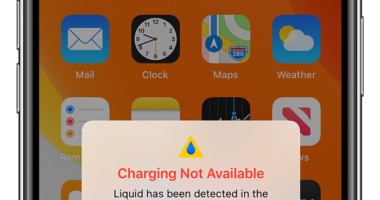CHINA says it has landed on the Moon in a “risky” mission to collect the first lunar samples in four decades.
The Chang’e 5’s final descent began at 14.58 UK time – with a claimed touchdown just 15 minutes later.
Broadcasts of the event were cut short before the landing burn, but Chinese officials have said the touchdown was successful.
The official coverage ended around 20 minutes before the claimed landing occurred.
It’s a major milestone for Beijing’s space ambitions, with China pouring billions into exploration – as the US, Russia, India, Japan and others do the same.
China launched the craft eight days ago from the Wenchang Spacecraft Launch Site in the south of the country.
The mission’s goal is to shovel up lunar rocks and soil to help scientists learn about the Moon’s origins, formation and volcanic activity on its surface.
State TV footage of the launch showed the rocket blasting off into a dark night and carrying the Chang’e-5 probe – named for the mythical Chinese moon goddess – with huge clouds of smoke billowing out underneath.
The eight-tonne spacecraft took off at 4:30 am (8:30pm GMT Monday, November 23) at the Wenchang Space Center on the southern island province of Hainan.
Crowds watched the launch from the beach on the tropical Chinese island, holding mobile phones aloft to film as the rocket blasted into the sky.
The original mission, planned for 2017, was delayed due to an engine failure in the Long March 5 rocket.
If successful, China will be only the third country to have retrieved samples from the Moon, following the United States and the Soviet Union in the 1960s and 1970s.
China’s probe will collect two kilos (4.5 pounds) of surface material in a previously unexplored area known as Oceanus Procellarum – or “Ocean of Storms” – which consist of a vast lava plain, according to the science journal Nature.
It’s expected to collect material during one lunar day – equivalent to around 14 Earth days.
These samples will then be returned to Earth in a capsule programmed to land in northern China’s Inner Mongolia region in early December, according to US space agency Nasa.
The mission is technically challenging and involves several innovations not seen during previous attempts at collecting moon rocks, said Jonathan McDowell, an astronomer at the Harvard-Smithsonian Center for Astrophysics.
“The US never did a robotic sample return. The Soviet one was very limited and could only land at certain restricted spots,” McDowell told AFP.
“China’s system will be the most flexible and capable robotic sample return system yet.”
A Chinese lunar rover landed on the far side of the Moon in January 2019, in a global first that boosted Beijing’s aspirations to become a space superpower.
It was the second Chinese probe to land on the Moon, following the Yutu (“Jade Rabbit”) rover mission in 2013.
Chen Lan, an independent analyst at GoTaikonauts, which specialises in China’s space programme, said the latest launch was a chance for China to develop technology that would be used in a future manned space landing and described it as “one of the most risky missions launched by China”.
“It not only needs to take off from the lunar surface and to re-enter the Earth atmosphere in higher speed, but also to perform lunar orbit rendezvous and docking operations in lunar orbit,” Chen told AFP.
The Moon – our closest neighbour explained
Here’s what you need to know…
- The Moon is a natural satellite – a space-faring body that orbits a planet
- It’s Earth’s only natural satellite, and is the fifth biggest in the Solar System
- The Moon measures 2,158 miles across, roughly 0.27 times the diameter of Earth
- Temperatures on the Moon range from minus 173 degrees Celcius to 260 degrees Celcius
- Experts assumed the Moon was another planet, until Nicolaus Copernicus outlined his theory about our Solar System in 1543
- It was eventually assigned to a “class” after Galileo discovered four moons orbiting Jupiter in 1610
- The Moon is believed to have formed around 4.51billion years ago
- The strength of its gravitational field is about a sixth of Earth’s gravity
- Earth and the Moon have “synchronous rotation”, which means we always see the same side of the Moon – hence the phrase “dark side of the Moon”
- The Moon’s surface is actually dark, but appears bright in the sky due to its reflective ground
- During a solar eclipse, the Moon covers the Sun almost completely. Both objects appear a similar size in the sky because the Sun is both 400 times larger and farther
- The first spacecraft to reach the Moon was in 1959, as part of the Soviet Union’s Lunar program
- The first manned orbital mission was Nasa’s Apollo 8 in 1968
- And the first manned lunar landing was in 1969, as part of the Apollo 11 mission
The official Xinhua news agency on Tuesday hailed the Chang’e-5 launch as a sign of China’s leadership in space.
“Although China is now taking the lead in lunar exploration through decades of independent innovation in space technologies, it has always been committed to sharing the achievements,” Xinhua said in a commentary.
The latest Chang’e-5 probe is among a slew of ambitious targets set by Beijing.
Those include creating a super-powerful rocket capable of delivering payloads heavier than those Nasa and private firm SpaceX can handle, a lunar base, a permanently crewed space station, and a Mars rover.
In other news, astronomers have created a “Google Maps of the Universe”.
Nasa hopes to peer back in time using the James Webb Space telescope.
And, Nasa recently revealed a surreal photo of Earth taken from 4billion miles away.
We pay for your stories! Do you have a story for The Sun Online Tech & Science team? Email us at [email protected]
This post first appeared on Thesun.co.uk



















